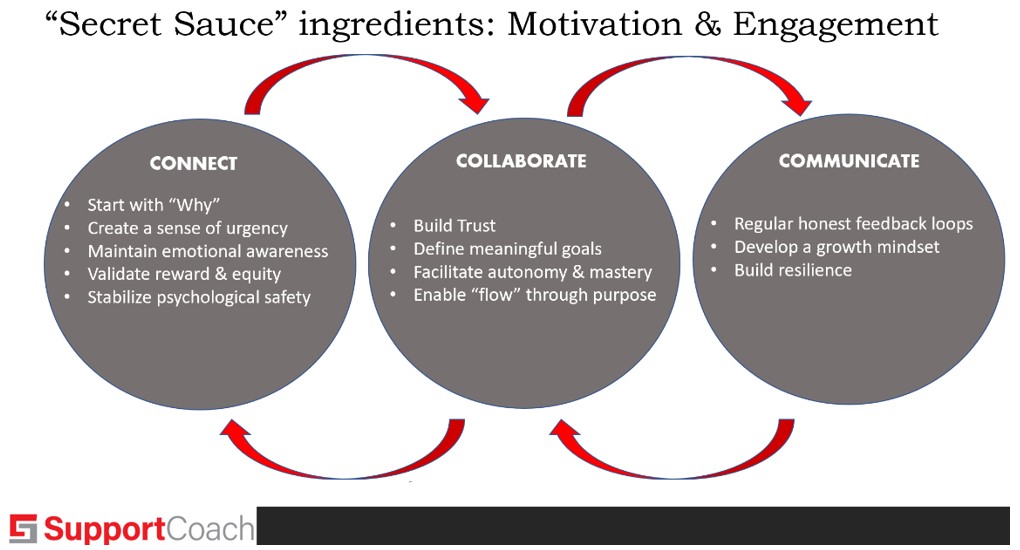Standing still is now the new reverse in business. For an organization to thrive successfully, change is essential. Leaders must continuously define strategy and managers need the skills to successfully implement that strategy and support their teams. McKinsey tells us that more than 70% of change processes fail. Why are these statistics so high? And what can be done to increase success rates?
A career built around change and a recent MBS focused on strategic organizational change has built greater understanding of the psychology behind change from 3 key aspects:
-
-
- As an employee who is part of a restructuring change process;
- As a manager or leader who is responsible for delivering critical change; and
- As a change catalyst who consults with business leaders to design and implement change.
-
From the employee’s perspective, fear can be one of the biggest challenges. Will this change impact my career? Will I be able for this change? Will I like this change? These are just some of the questions that frequently roll through employees minds and can result in challenges to productivity, demotivation and resistance.
From the manager and leader’s perspective, supporting their team members to navigate the emotions of change can often be about as easy as paddling an inflatable life raft on stormy seas. You never know how high the next wave can be, whether you’ll get over the wave or whether it will get over you!
As a consultant, my role is to support business leaders re-define organizational vision, and design and implement transformational change through strategic goals (best job ever – I love it!). The challenge, as an external agent, is to rapidly connect, build trust, allay fears and, by doing so, win the “hearts and minds” (Kotter, 2009) for change. To successfully achieve this, I designed the 3 C’s Framework: Connect, Collaborate and Communicate. And yes, all puns on C’s (seas!) are intentional!

Connect
Cross-functional workshops pave the way to increase trust for subsequent engagement in team meetings and 1-1’s with key stakeholders to capture additional qualitative and quantitative data through open dialogue.
Urgency to directly connect people to true issues is crucial. COVID-19 offers a perfect example where a sense of urgency to safeguard health, wellbeing and livelihood acted critically motivated unconsidered results in the shortest periods, aligned to powerful messages from governments and health industry, and aligned with values. Kotter (HBR, 2009), identified success when client challenges were shared directly with employees. Lack of urgency can create complacency, which risks potential demise of an organization. By sharing client challenges and focusing on competitor risk, employees connect first-hand with pain points and realize the sense of urgency for strategic focus.
Collaborate

Connect
Cross-functional workshops pave the way to increase trust for subsequent engagement in team meetings and 1-1’s with key stakeholders to capture additional qualitative and quantitative data through open dialogue.
Urgency to directly connect people to true issues is crucial. COVID-19 offers a perfect example where a sense of urgency to safeguard health, wellbeing and livelihood acted critically motivated unconsidered results in the shortest periods, aligned to powerful messages from governments and health industry, and aligned with values. Kotter (HBR, 2009), identified success when client challenges were shared directly with employees. Lack of urgency can create complacency, which risks potential demise of an organization. By sharing client challenges and focusing on competitor risk, employees connect first-hand with pain points and realize the sense of urgency for strategic focus.

